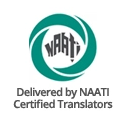
The Vietnamese language has 85 million speakers. It has been through six periods of development (as identified by French sinologist Henri Maspero) to get to its current form. Initially, Proto-Viet-Muong (before 7th century AD) laid the groundwork for Vietnamese grammar and tones, shared with Southeast Asian languages.
Chinese dominance from the 2nd century BC led to a surge in Sino-Vietnamese vocabulary (7th-9th centuries AD). This influence continued as Chinese characters (chữ Hán) were adopted in the 10th century alongside a unique Vietnamese writing system, chữ Nôm. By the 15th century, Vietnamese tones increased from three to six, while chữ Nôm flourished. This era also saw the loss of contrastive voicing in consonants.
European influence arrived in the 17th century with missionaries like Alexandre de Rhodes documenting Vietnamese using the Latin alphabet. Finally, French colonization in the 19th century introduced Quốc Ngữ, a Romanized writing system that became dominant due to its ease of use compared to chữ Hán.
Diverse Dialects
Vietnamese boasts a rich tapestry of dialects. Northern, Central, and Southern dialects are the most prominent, each reflecting regional variations in pronunciation and vocabulary. For instance, the Northern dialect, spoken in Hanoi, features a distinctive pronunciation of the letter “r,” while the Southern dialect, spoken in Ho Chi Minh City, tends to have a simpler tonal system. Despite these variations, mutual intelligibility remains high, allowing speakers from various regions to communicate effectively.
Evolving in the Modern Era
The Vietnamese language continues to adapt to the modern world. The rise of technology has prompted the creation of new vocabulary related to the digital age. Terms like “mạng xã hội” (social network), “máy tính bảng” (tablet computer), and “thương mại điện tử” (e-commerce) have become commonplace.
Preserving Vietnamese
Efforts to promote and preserve Vietnamese are ongoing. Vietnam’s Ministry of Education and Training have implemented educational initiatives to ensure younger generations can connect with their linguistic heritage.
For example, Vietnamese students who are in international preschools need to take Vietnamese language course minimum 2 times a week. Similarly, those enrolled in international primary schools have to attend a minimum of 140 minutes weekly, and forth to fifth graders must partake in Vietnamese studies for 70 minutes in a week. Those in international middle and high schools are mandated 90 minutes a week of Vietnamese studies. This ensures that the language will continue to flourish for generations to come.
Vietnamese Slang
Vietnamese slang, like slang in any language, is a dynamic and ever-evolving phenomenon used for informal communication. Common slang terms include “chất” (cool), “bá đạo” (awesome), and “đỉnh cao” (the best). Social media platforms like Facebook and Zalo are breeding grounds for new slang terms, reflecting the influence of youth culture on the language.
Exploring Vietnamese Consonants
Unlike English, Vietnamese consonants are not voiced at the end of words. Notably, final consonants can vary in voicing depending on the sound. For instance, the “p” in “bát” (bowl) becomes voiceless at the end, while the “n” in “lan” (orchid) remains voiced.
Additionally, Vietnamese features prenasalized consonants, where a brief nasal sound precedes the consonant itself. The word “mình” (I/we) exemplifies this, where the “m” is pronounced with a slight nasal tinge before the actual consonant sound. Understanding these intricacies is crucial for mastering Vietnamese pronunciation.
Our Translation Services
At TranslateSwift, we understand the power of language to connect cultures. Our team of expert Vietnamese translators offer high-quality translations that are accurate, reliable, and culturally sensitive. To learn more about our Vietnamese translation services, please visit our website.
Other Languages
- English
- Spanish
- German
- Dutch
- French
- Italian
- Afrikaans
- Albanian
- Amharic
- Arabic
- Armenian
- Azerbaijani
- Basque
- Belarusian
- Bengali
- Bosnian
- Bulgarian
- Cantonese
- Catalan
- Cebuano
- Chichewa
- Chinese - Simplified
- Chinese - Cantonese
- Chinese - Traditional
- Chinese - Mandarin
- Corsican
- Croatian
- Creole
- Czech
- Danish
- Dari
- Esperanto
- Estonian
- Farsi
- Filipino
- Finnish
- Frisian
- Galician
- Georgian
- Greek
- Gujarati
- Haitian Creole
- Hausa
- Hawaiian
- Hebrew
- Hindi
- Hmong
- Hungarian
- Icelandic
- Igbo
- Indonesian
- Irish
- Japanese
- Javanese
- Kannada
- Kazakh
- Khmer
- Korean
- Kurdish
- Kyrgyz
- Lao
- Latin
- Latvian
- Lithuanian
- Luxembourgish
- Macedonian
- Malagasy
- Malay
- Malayalam
- Maltese
- Maori
- Marathi
- Mongolian
- Montenegrin
- Myanmar
- Nepali
- Norwegian
- Odia
- Pashto
- Persian
- Polish
- Portuguese
- Punjabi
- Romanian
- Russian
- Samoan
- Scots Gaelic
- Serbian
- Sesotho
- Shona
- Sindhi
- Sinhala
- Slovak
- Slovenian
- Somali
- Sundanese
- Swahili
- Swedish
- Tajik
- Tagalog
- Tamil
- Telugu
- Thai
- Turkish
- Ukrainian
- Urdu
- Uyghur
- Uzbek
- Vietnamese
- Welsh
- Xhosa
- Yiddish
- Yoruba
- Zulu
